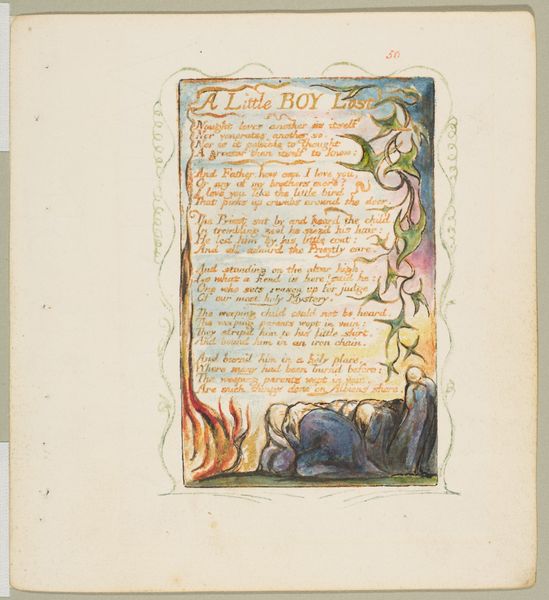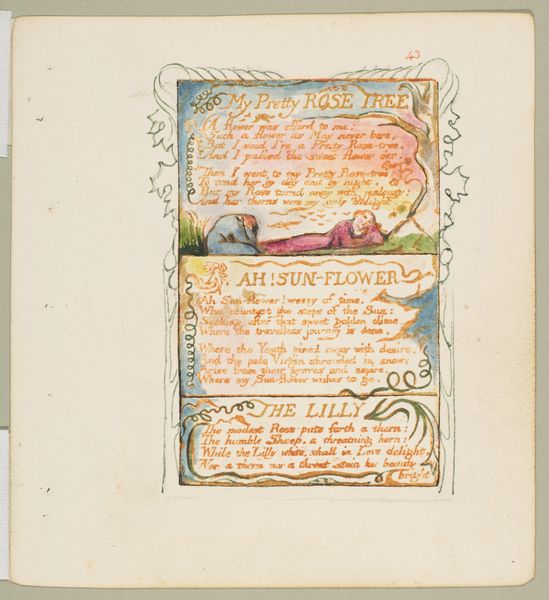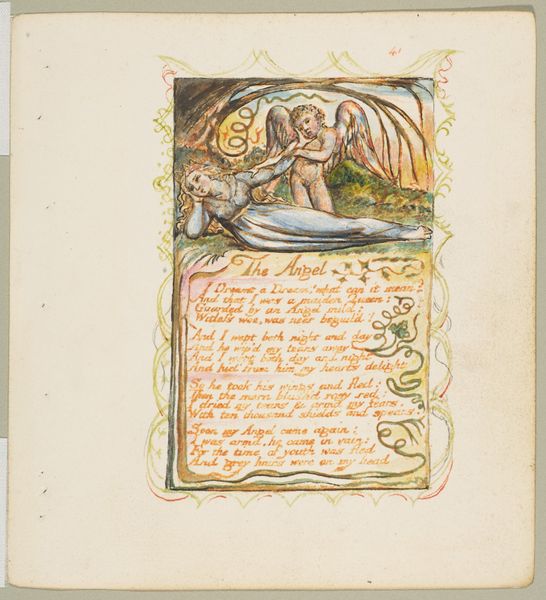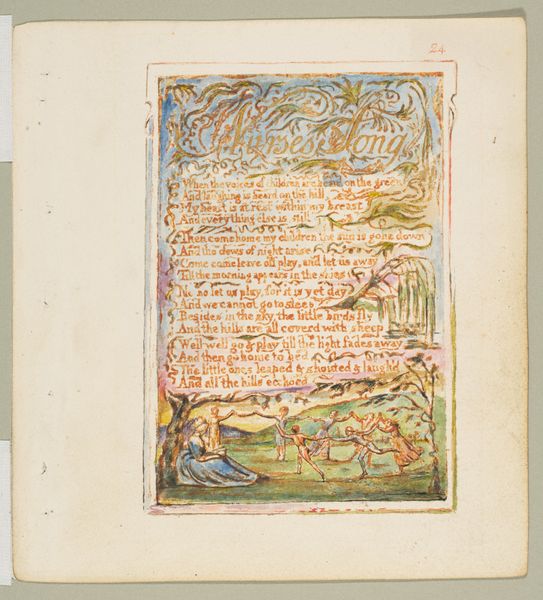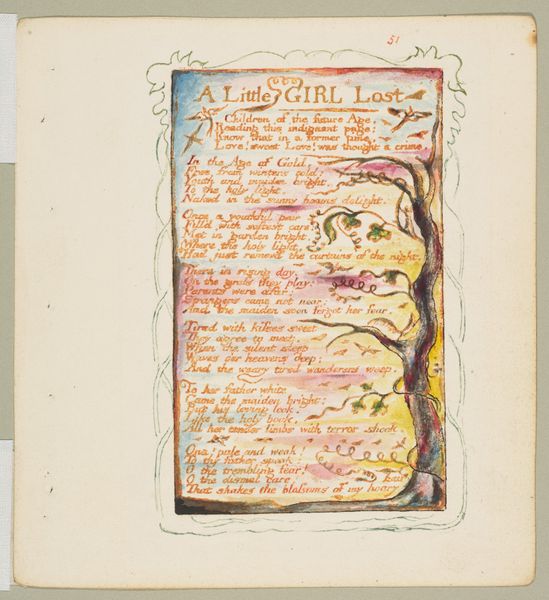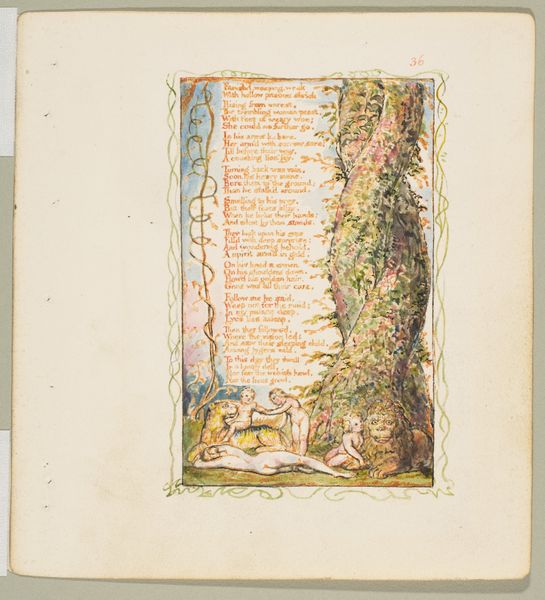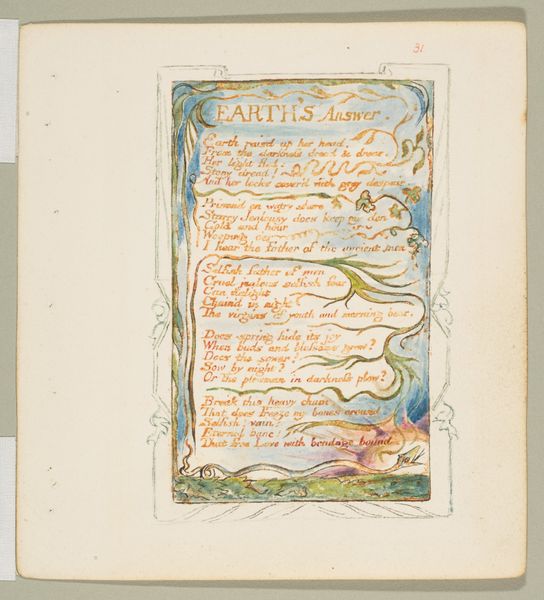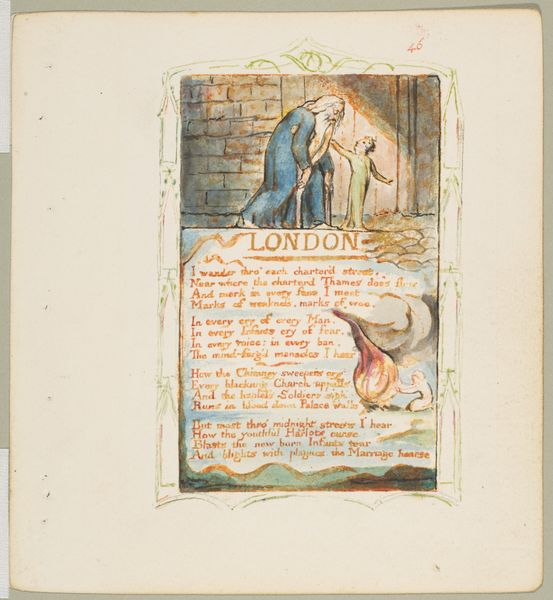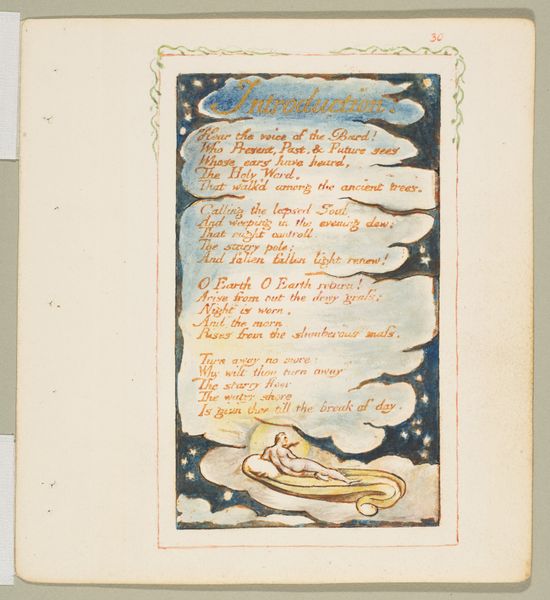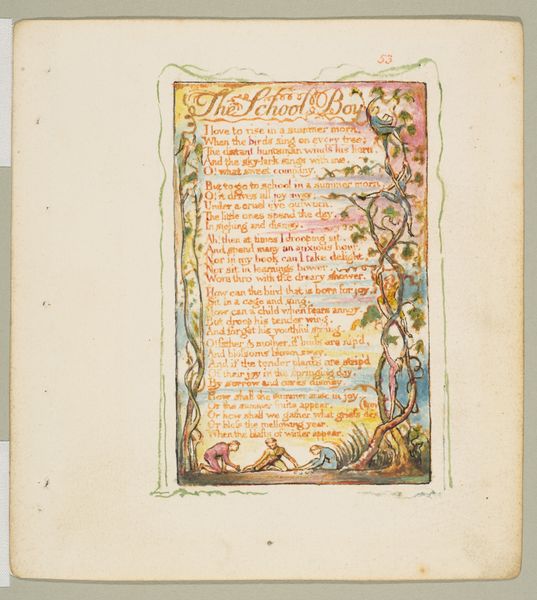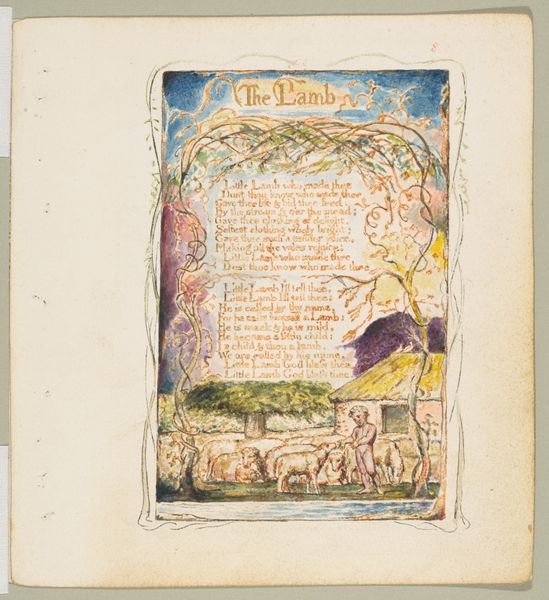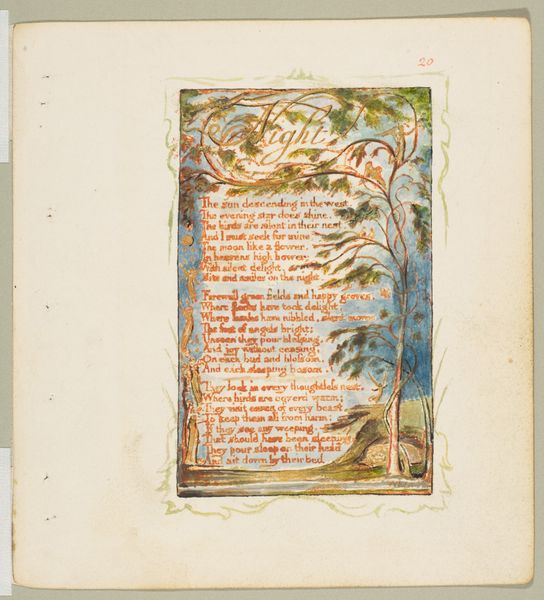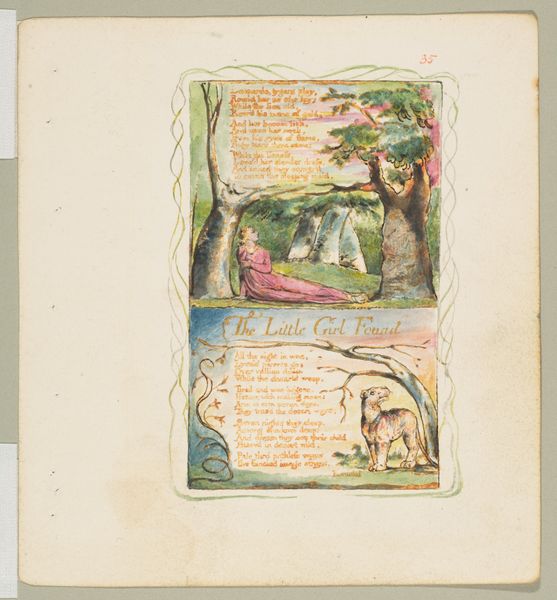
Dimensions: sheet: 6 3/16 x 5 9/16 in. (15.7 x 14.1 cm)
Copyright: Public Domain
Curator: Here we have William Blake’s “The Human Abstract,” created between 1794 and 1825. It combines image and text, characteristic of his illuminated printing. It's currently housed at the Metropolitan Museum of Art. Editor: My immediate reaction is one of earthy somberness. The colors are muted, the figure seems trapped. There’s a very literal feeling of being grounded. Curator: Let’s consider Blake’s radical politics. "The Human Abstract" critiques institutionalized religion and rationalism. Blake often illustrated his poems, creating visual metaphors for complex ideas, highlighting the flaws in established power structures. It's worth asking why the gods seek the tree. Editor: Yes, the "Tree of Mystery" certainly draws attention to the means of artistic and social production. Its roots, watered by "tears", nourish deceit. So, compassion leads to cruelty and a warped, hidden production? It also seems as if Humility is like a foot keeping it in place and enabling it? Curator: Precisely. He is questioning the source, locating it firmly in flawed human intellect and systems of power that rely on these negative qualities for their continued operation. Editor: And the process by which we construct these abstract ideas, abstract ideas of goodness, like compassion. What sort of processes give shape to them? There is almost a sort of self-cannibalization in here as each section grows or benefits from something seemingly destructive. Is it possible to extract ourselves? Curator: Blake consistently questions our relationship to those structures. The natural world, once a source of spiritual insight, is now corrupted, literally feeding on deceit and mystery. But consider also the materiality: the layered watercolors, the delicate lines etched into metal. It reminds us this is carefully made—a critique produced through skilled craft. Editor: I agree, Blake uses the print medium as a challenge. He foregrounds process and points at how complex it is. And the tree continues growing as its own rotten root is under the feet of man. It makes one wonder about what he would feel looking at these sorts of cycles today. Curator: Ultimately, "The Human Abstract" remains a powerful statement against complacency and a reminder of the ongoing need for critical self-reflection within cultural landscapes and in broader societal change. Editor: I like how you have located that cycle in our present context by examining its craft as part of a deeper issue of labor!
Comments
No comments
Be the first to comment and join the conversation on the ultimate creative platform.
